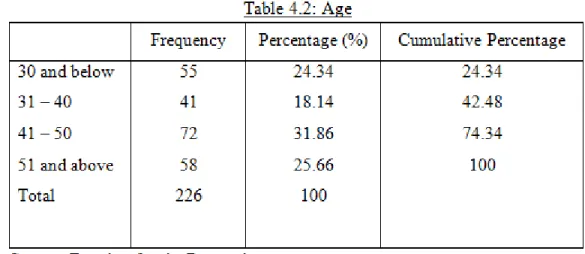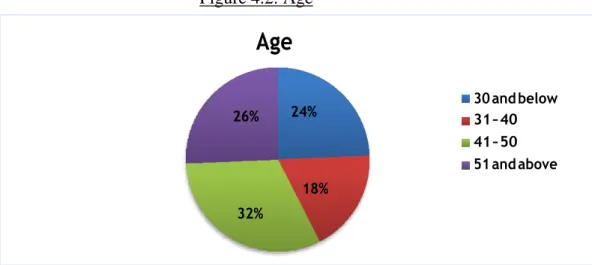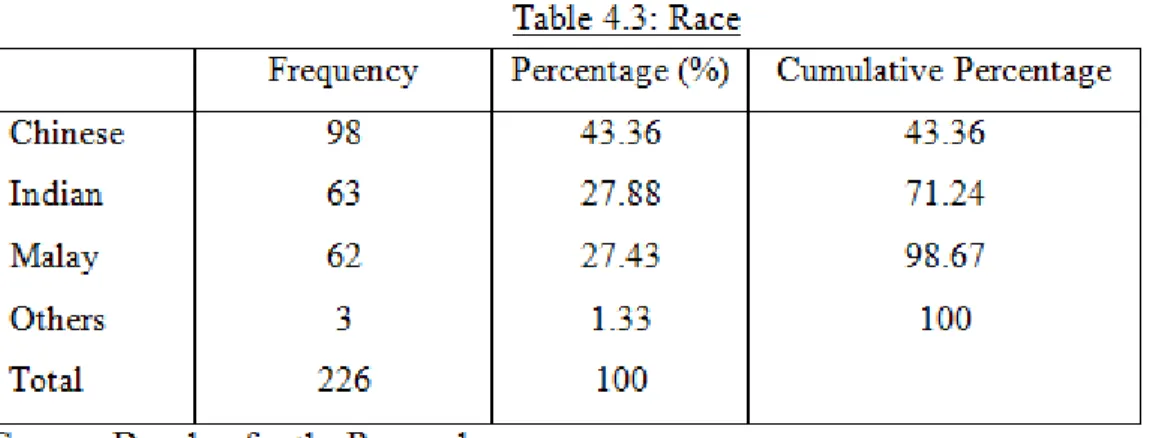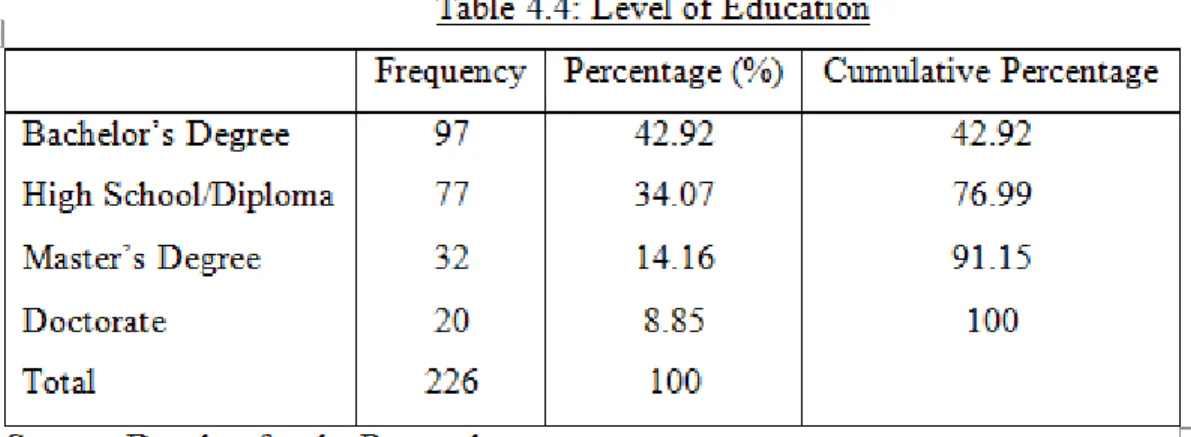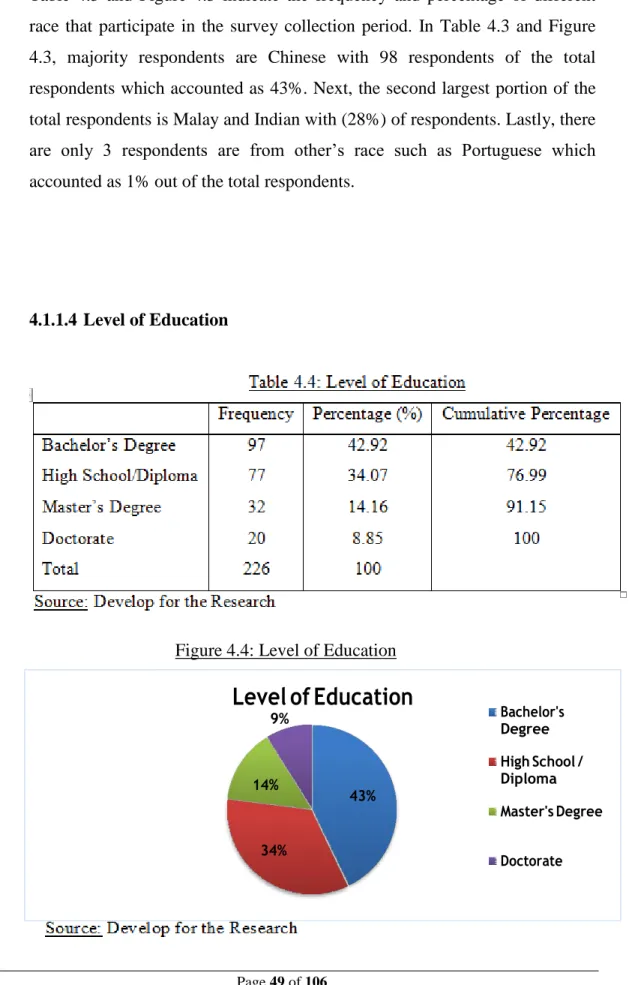Therefore, we would like to thank Universiti Tunku Abdul Rahman (UTAR) for the opportunity to conduct this research project. The title of this research is a study on factors influencing household involvement in recycling activities.
RESEARCH OVERVIEW
- Introduction
- Research Background
- Problem Statement
- Research Objectives
- General Objectives
- Specific Objectives
- Research Questions
- Hypotheses of the Research
- Significance of the Research
- Chapter Layout
- Conclusion
This chapter provides an overview of the research method used to collect the data for this study. This chapter is an overview of the research proposal containing the background of the research and the problem statement.
LITERATURE REVIEW
- Introduction
- Literature Review
- Dependent Variable – Recycling Behavior
- Independent Variables – Attitudes
- Independent Variables – Social Norms
- Independent Variables – Perceived Behavioral Control
- Independent Variables – Moral Norms
- Proposed Theoretical Framework
- Conceptual Framework
- Hypothesis Development
- The relationship between attitude and recycling behavior
- The relationship between social norms and recycling behavior
- The relationship between perceived behavioral control and
- The relationship between moral norms and recycling behavior
- Conclusion
H0: There is no significant relationship between social norms and recycling behavior versus household involvement in recycling activities. H2: There is a positive relationship between social norms and recycling behavior towards household involvement in recycling activities.
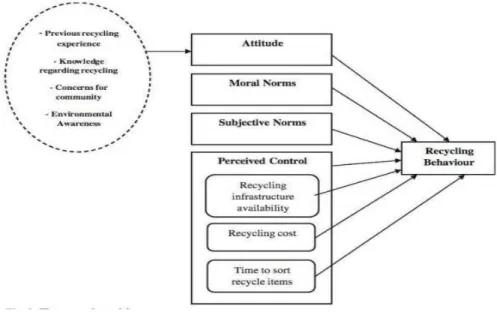
RESEARCH METHODOLOGY
- Introduction
- Research Design
- Quantitative Research
- Causal Research
- Deductive Research
- Data Collection Method
- Primary Data
- Sampling Design
- Target Population
- Sampling Frame and Sampling Location
- Sampling Elements
- Sampling Technique
- Sampling Size
- Research Instrument
- Design of Questionnaire
- Pilot Test Study
- Construct Measurement
- Origin of Construct
- Scale of Measurement
- Data Processing
- Questionnaires Checking
- Data Editing
- Data Coding
- Data Transcribing
- Data Analysis
- Descriptive Analysis
- Scale Measurement
- Inferential Analyses
- Conclusion
In this research, the original source of the questionnaire was adapted from past studies and will be shown in Appendix B. In this research, a nominal scale was used to calculate the demographic question of the respondent, such as race, gender, age, education level, occupation, and marital status. Demographic questions such as the age range of respondents are measured on an ordinal scale in this study.
In this measurement, a 5-point Likert scale was used in this research in order to measure the opinion of the respondents about the dependent variable (recycling behavior) and four independent variables (attitudes, social norms, moral norms and perceived behavioral control). In this research, descriptive analysis will be used to analyze the nominal and ordinal data regrading to the demographic question in Section A and all the summary of the data will be presented in table and pie chart. In this research, Cronbach's Alpha coefficient was used to measure the internal consistency reliability of both dependent and independent variables.
In this study, Pearson's correlation coefficient analysis and multiple linear regression analysis were adopted to analyze the data of the variables and explain the relationship between each other. In this research, MLR is used to measure the relationship between the dependent variable (recycling behavior) and the independent variables (attitudes, social norms, moral norms, and perceived behavioral control). The following chapter will interpret and discuss the details of the data analysis results based on the techniques mentioned in this chapter.
DATA ANALYSIS
- Introduction
- Descriptive Analysis
- Respondent‟s Demographic Profile
- Central Tendencies Measurement of Constructs
- Scale Measurement
- Internal Reliability Analysis
- Inferential Analysis
- Pearson‟s Correlation Coefficient Analysis
- Multiple Linear Regression Analysis
- Test of Significant
- Conclusion
H1: There is a positive relationship between recycling attitudes and behavior towards household involvement in recycling activities. In conclusion, attitudes do not have a significant relationship between recycling behavior and the involvement of households in recycling activities. In conclusion, social norms do not have a significant relationship between recycling behavior and the involvement of families in recycling activities.
H3: There is a positive relationship between perceived behavioral control and recycling behavior to household involvement in recycling activities. In conclusion, perceived behavioral control is significantly related to recycling behavior and household involvement in recycling activities. H4: There is a positive relationship between moral norms and recycling behavior towards household involvement in recycling activities.
In conclusion, the moral standard has a significant relationship between recycling behavior and household involvement in recycling activities. H3: The relationship between perceived behavioral control and recycling behavior versus household involvement in recycling activities. In this study, the observed behavioral control is sufficiently significant for recycling behavior relative to household involvement in recycling activities.
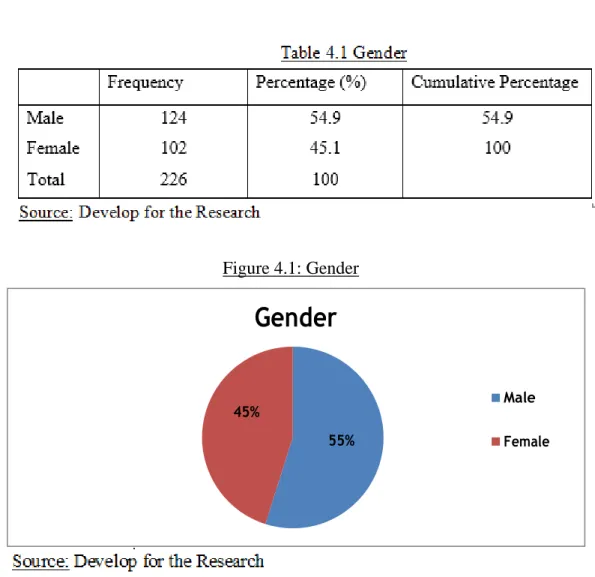
DISCUSSION, CONCLUSION AND IMPLICATION
Introduction
Besides, the implications of study will also be discussed in the chapter, including the theoretical and management implications. Furthermore, the chapter will also discuss the limitations of the study and recommendations for future research.
Summary of Statistical Analysis
- Descriptive Analysis
- Scale Measurement (Reliability Analysis)
- Inferential Analyses
- Pearson‟s Correlation Coefficient Analysis
- Multiple Linear Regression Analysis
In this research, most of the respondents are married with 62%, while the remaining 38% of the respondents are single. Each variable in internal consistency reliability is tested with Cronbach's Alpha, so it shows that the measuring instruments are considered reliable that the alpha value for all variables in this research is more than 0.6. The Cronbach's Alpha coefficient of recycling behavior is 0.885 which is higher than 0.7, so is an acceptable value.
Therefore, two of the independent variables have a positive significant correlation and the other two independent variables have an insignificant correlation with the dependent variable. This means that attitude 0.198 and social norm 0.255 have insignificant influence; perceived behavioral control is .550 and morale. Based on the R-squared regression of recycling behavior, it is 0.412, which illustrates that 41.2% of the variation in recycling behavior can be explained by the four independent variables.
Thus, the F value of 38.792 is significant at a significant level of 0.05 ( p =0.000 < 0.05), so the regression model is considered moderate and has a good fit for predicting recycling. In addition, the result explained that moral norms have the strongest influence on recycling behavior on household involvement in recycling activities, followed by perceived behavioral control. Therefore, all independent variables have positive beta (β) coefficient values, which conclude that all independent variables have a positive influence on recycling behavior.
Discussion of Major Findings
- Attitude
- Social Norms
- Perceived Behavioral Control
- Moral Norms
In this study, the social norms are not statistically significant for recycling behavior in relation to households' involvement in recycling activities. In particular, according to Nguyen et al. 2017) refers to social norms as commonly as it carries interactions internally and externally, helping to create relationships and awareness of recycling behaviors. Based on the previous study by Mahmud et al. 2015), they concluded that perceived behavioral control has a direct impact on recycling behavior.
This is because based on the studies completed by Mahmud et al. 2012), they reported that perceived behavioral control was the strongest and most important predictor of recycling behavior. Furthermore, Klöckner & Oppedal (2011) conclude that although perceived behavioral control has a limited influence on recycling behaviour, it is still significant for recycling behaviour. In this study, the results showed that moral norms are sufficiently significant for recycling behavior with respect to household involvement.
Moreover, another researcher Ahmad et al. 2014), they indicate that the moral norms had a strong impact on an individual's behavior. This is because the belief of an individual is established based on how an individual performs in a specific behavior and it must include the recycling behavior as an important variable within the model. Finally, Chan & Bishop (2013) and Poškus (2015) conclude that some studies even recommend that moral norms can successfully replace the attitudes towards the recycling behavior in the model of TPB.
Implications of the Study
- Managerial Implications
- Attitudes
- Social Norms
- Perceived Behavioral Control
- Moral Norms
Based on the result of this study, moral norms and perceived behavioral control may influence recycling behavior towards household involvement in recycling activities. On the other hand, the attitudes and social norms do not indicate a significant relationship with recycling behaviour. This study argues that attitude is inconsistent with the findings of the study because there is no significant relationship with recycling behavior relative to household involvement in recycling activities.
These results show that Social norm is not significantly related to recycling behavior versus household involvement in recycling activities. This therefore means that a social norm is not a main factor on recycling behaviour. 2013) mentioned that social norms that implement recycling levels for individuals and also influence between friends, neighbors and family members. The result shows that perceived behavioral control has a significant relationship with recycling behavior versus household involvement in recycling activities.
According to Mahmud et al. 2012), they mentioned that perceived behavioral control was the main predictor towards recycling behavior. Moral norms are also one of the important factors that can influence recycling behavior towards the involvement of households in recycling activities. In addition, some studies even recommend that moral norms can successfully replace attitudes towards recycling behavior in the Theory of Planned Behavior (TPB) model (Chan & Bishop, 2013; . Poškus, 2015).
Limitations of the Study
- Unequal Sample Group and Sample Size
- Time Constraints
- Restriction of Few Geographical Location in Malaysia
- Language Barriers
Moreover, this research is conducted in a limited time frame as the time frame of the process of data collected for this research lasts only 3 to 4 weeks. So, this issue can reduce the accuracy and also the sample size of this research received from the respondents participating in this process. In this research, only two geographical locations in Malaysia were selected by the researchers, which involve Kuala Lumpur and Selangor.
So it will become inaccurate in this research due to the coverage number of the geographical location in Malaysia is limited. As this questionnaire is written entirely in English, not every respondent in Kuala Lumpur and Selangor is proficient in English. This can therefore lead to the reduction of the accuracy of the research during the process of collecting the data.
Recommendations for Future Research
- Adding More Independent Variables
- Increase Sample Size
- Adding More Geographical Location
For future research, obtaining more target respondents will gain more accurate and reliable data analysis for significant positive results from large sample size results. So for future researchers, adding more locations to their research could be better in terms of more detail and accurate analysis. In addition, by conducting several other locations, we could have a much better response by obtaining more in-depth information from the target respondents.
Conclusion
The determinants of recycling intention behavior among Malaysian school students: an application of planned behavior theory. Recycling behavior of householders living in a multicultural urban area: a case study from Jarva, Stockholm, Sweden. Determining socio-psychological drivers for recycling behavior of rural households in developing countries: a case study from Wugan, Hunan, China.
Social influence in the theory of planned behavior: the role of descriptive, injunctive and in-group norms. Residents' Waste Segregation Behavior at Source: Using SEM with the Theory of Planned Behavior in Guangzhou, China. Household recycling is referred to variables such as attitudes, motivation and need regarding the environment and demographics.
This section asks for your views on the factors that influence household involvement in recycling activities. Doing whatever it takes to recycle at home is something I've been doing for a long time. It makes me feel weird when I don't do everything it takes to recycle at home.
I always intend to recycle my household waste, but it makes a mess, so I usually throw everything away. I always intend to recycle my household waste but it makes a mess so I usually throw everything in the bin.



